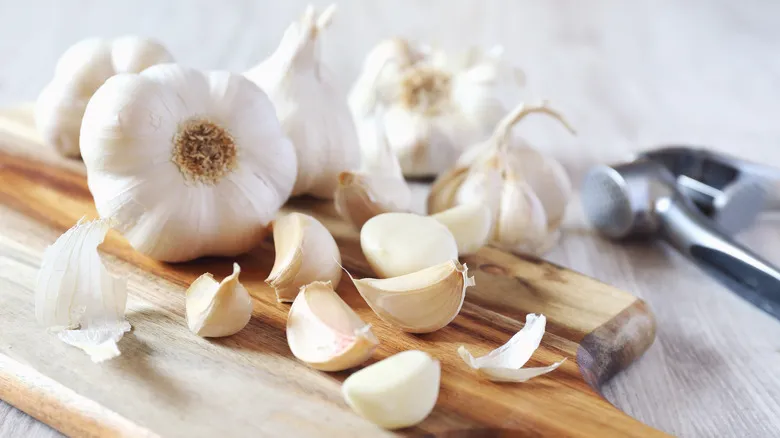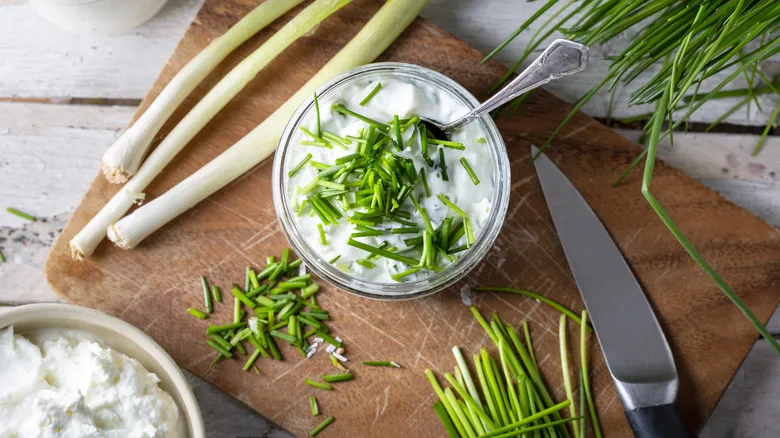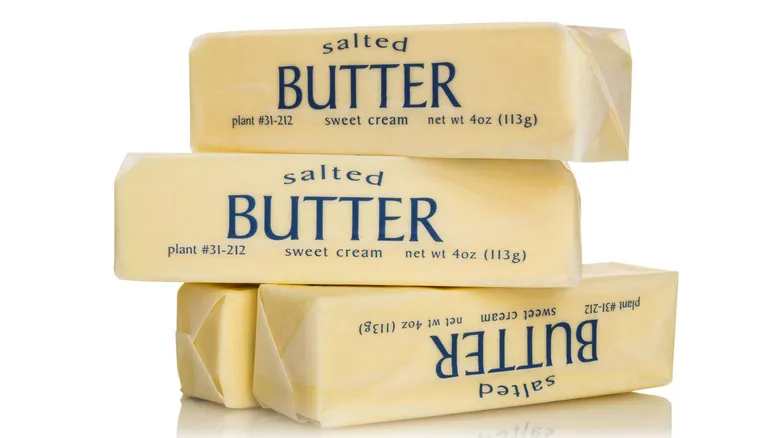The way you melt your butter matters, and here's why

The standing-up method is an excellent way to quickly soften butter. This is important because baking is often considered a science. Overheating your butter in the microwave can transform it from a pliable, firm texture to a completely melted liquid, which can affect the outcome of your baked goods. For instance, when making cakes or cookies, the butter needs to be soft enough to cream into a stiff consistency, which helps create a light and fluffy final product. This is due to the solid fat in the butter trapping tiny air pockets that contribute to the airiness and height of the baked item. Conversely, using butter that is too melted can result in denser cakes and flat, spread-out cookies.
If you don’t have the luxury of waiting hours for a frozen stick of butter to soften, the microwave can be a quick solution. To achieve the desired consistency, melt the butter in short bursts of several seconds in the microwave. It’s best to keep the butter in its paper wrapper while doing this, as most butter wrappers are made from paraffin-coated paper that is microwave-safe, helping to prevent any mess.
How to achieve the perfect, just softened-enough butter texture

When using this method, be mindful of how the butter is softening. Typically, you'll need about 15 to 25 seconds in total (broken into shorter intervals) for the butter to be ready for creaming with sugar and incorporating into your recipes. To check if it's softened, perform the finger test: gently press your finger into the stick or use the back of a spoon. If it leaves a slight indentation while still holding its shape, it's perfectly softened—not too far gone.
Occasionally, you might accidentally melt your butter. Perhaps you added a few extra seconds in the microwave, and before you know it, it has transitioned from softened to a melted puddle. This happens to everyone. Depending on your recipe, you can often still use melted butter for baking. In some cases, especially if you prefer crispy cookies, it might even be beneficial! However, for recipes like pastry, cold butter is essential, and using butter that's too warm will compromise your results. The same applies to buttercream, which requires butter that is softened but not liquid. To avoid this, microwave in 5-10 second intervals and keep a close watch to ensure the butter doesn’t become overly soft.
Recommended

The Convenient Microwave Hack For Peeling Garlic In No Time

9 Kitchen Tool Swaps That Make Cooking So Much Easier

The Best Bacon Brand, According To Chef Thomas Keller

3 Sour Cream Substitutes To Use And 3 To Skip
Next up

